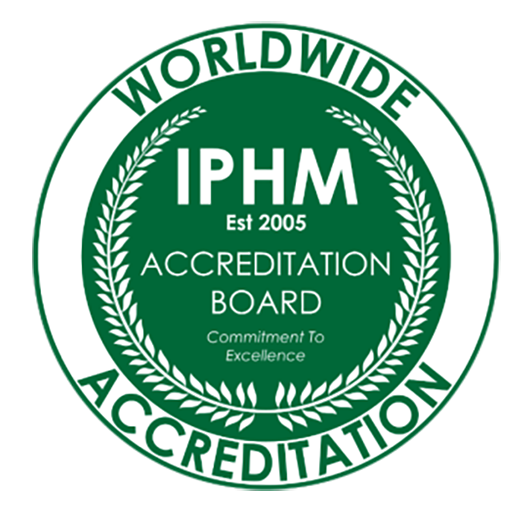Do you want to know whether you are at risk of common lifestyle-related conditions? Perhaps you are already taking steps to improve your diet or exercise levels and want to monitor the impact on your health.
A simple, intravenous blood test that checks your liver and kidney function, cholesterol levels and key vitamins and iron for energy and optimal health.
Do you want to know whether you are at risk of common lifestyle-related conditions? Perhaps you are already taking steps to improve your diet or exercise levels and want to monitor the impact on your health.
Finding out where you stand on common health issues like high cholesterol, liver health and vitamin deficiencies gives you the opportunity to take action to improve.
Our Health and Lifestyle Blood Test is a general health check that focuses on areas of your health that can often be improved by lifestyle changes. Find out whether you need to take steps to reduce your cholesterol levels, increase your vitamin D or support your liver health – with tips from our doctors on what you can do to improve.
With our Health and Lifestyle Blood Test, you can investigate lifestyle-related health risks that could apply to you. This test includes an online assessment of your vital statistics, blood test results, and advice and comments from one of our doctors. With tips on diet and lifestyle included on your dashboard, it can help you pinpoint the areas of your health you need to focus on.
Our Health and Lifestyle Blood Test measures important markers for liver, kidney, and heart health (cholesterol), as well as tests for inflammation (CRP-HS, iron stores (ferritin) and vitamin D and active B12 for energy and best health.
Avoid heavy exercise for 48 hours beforehand. Avoid fatty foods for eight hours before your test, you do not need to fast. You should take this test before you take any medication or vitamin/mineral supplements. Do not take biotin supplements for two days before this test.
Cholesterol is an essential fat (lipid) in the body. Although it has a bad reputation it has some important functions, including building cell membranes and producing a number of essential hormones including testosterone and oestradiol. Cholesterol is manufactured in the liver and also comes from the food we eat. Although there are a number of different types of cholesterol, the two main components of total cholesterol are HDL (high density lipoprotein) which is protective against heart disease and LDL (low density lipoprotein) which, in high levels, can contribute to cardiovascular disease. Your total cholesterol result on its own is of limited value in understanding your risk of heart disease; high levels of HDL cholesterol can cause a raised total cholesterol result but may actually be protective against heart disease. Equally, you can have a normal total cholesterol level but have low levels of protective HDL cholesterol. The most important factors are how much HDL and LDL cholesterol you have, and what proportion of your total cholesterol is made up of protective HDL cholesterol. We give a detailed breakdown of the components of your total cholesterol in the rest of this cholesterol profile.
Cholesterol is an essential fat (lipid) in the body. Although it has a bad reputation it has some important functions, including building cell membranes and producing a number of essential hormones including testosterone and oestradiol. Cholesterol is manufactured in the liver and also comes from the food we eat. Although there are a number of different types of cholesterol, the two main components of total cholesterol are HDL (high density lipoprotein) which is protective against heart disease and LDL (low density lipoprotein) which, in high levels, can contribute to cardiovascular disease. Your total cholesterol result on its own is of limited value in understanding your risk of heart disease; high levels of HDL cholesterol can cause a raised total cholesterol result but may actually be protective against heart disease. Equally, you can have a normal total cholesterol level but have low levels of protective HDL cholesterol. The most important factors are how much HDL and LDL cholesterol you have, and what proportion of your total cholesterol is made up of protective HDL cholesterol. We give a detailed breakdown of the components of your total cholesterol in the rest of this cholesterol profile.
LDL cholesterol (low-density lipoprotein) is a molecule made of lipids and proteins which transports cholesterol, triglycerides and other fats to various tissues throughout the body. Too much LDL cholesterol, commonly called ‘bad cholesterol’, can cause fatty deposits to accumulate inside artery walls, potentially leading to atherosclerosis and heart disease.
Your total cholesterol is broken down into 2 main components; HDL (good) cholesterol and LDL (bad). There are more types of harmful cholesterol in your blood than just LDL – these include VLDL (very low-density lipoproteins) and other lipoproteins which are thought to be even more harmful than LDL cholesterol. Non-HDL cholesterol is calculated by subtracting your HDL cholesterol value from your total cholesterol. It therefore includes all the non-protective and potentially harmful cholesterol in your blood, not just LDL. As such, it is considered to be a better marker for cardiovascular risk than total cholesterol and LDL cholesterol. The recommended level of non-HDL cholesterol is below 4 mmol/L.
HDL cholesterol (high-density lipoprotein) is a molecule in the body which removes cholesterol from the bloodstream and transports it to the liver where it is broken down and removed from the body in bile. HDL cholesterol is commonly known as ‘good cholesterol’.
Triglycerides are a type of fat (lipid) that circulate in the blood. After you eat, your body converts excess calories (whether from fat or carbohydrates) into triglycerides which are then transported to cells to be stored as fat. Your body then releases triglycerides when required for energy.
C-Reactive Protein (CRP) is an inflammation marker used to assess whether there is inflammation in the body – it does not identify where the inflammation is located. High Sensitivity CRP (CRP-hs) is a test used to detect low-level inflammation thought to damage blood vessels which can lead to a heart attack or stroke. When you suffer a serious injury or infection you experience significant inflammation around the site of injury – such as the swelling around a twisted ankle. Any injury like this will cause your CRP-hs to rise.
Iron is a mineral that is essential for life. It is a component of haemoglobin, a protein in our red blood cells that is responsible for transporting oxygen around our body. If we don’t have enough iron, our haemoglobin levels fall, and we can’t get sufficient oxygen to our cells. This can cause symptoms which include fatigue, dizziness, and shortness of breath. Serum iron is a very transient reading and can be influenced by the amount of iron-rich food in your diet in the days before your blood test. For this reason, iron is rarely looked at on its own, and is interpreted alongside other markers in an iron status test.
Total iron-binding capacity (TIBC) is a measure of the ability of your body to efficiently carry iron through the blood.
The estimated glomerular filtration rate (eGFR) assesses how well the kidneys are working by estimating the amount of blood filtered through the kidneys. The glomeruli are tiny filters in the kidneys responsible for removing waste products. If these filters do not do their job properly, kidney function can be impaired. The eGFR calculation is an estimate of actual glomerular filtration rate, calculated using your age, gender, ethnicity, and serum creatinine levels.
Creatinine is a chemical waste molecule that is generated from normal muscle metabolism. Measurement of this is an indicator of the levels of other waste products in the body. Creatinine is also an accurate marker of kidney function and may help in diagnosing kidney disease.
Bilirubin is a product of the breakdown of haemoglobin from red blood cells. It is removed from the body via the liver, stored and concentrated in the gallbladder and secreted into the bowel. It is removed from your body through urine and faeces. Bilirubin causes the yellowish colour you sometimes see in bruises, due to red blood cells breaking down underneath the skin.
Alkaline phosphatase (ALP) is an enzyme found mainly in the liver and bones. Measuring it can indicate ongoing liver, gallbladder or bone disease.
Alanine transferase (ALT) is an enzyme which is mostly found in the liver but is also found in smaller amounts in the heart, muscles and the kidneys. If the liver is damaged, ALT is leaked into to bloodstream. As ALT is predominantly found in the liver, it is usually an accurate marker for liver inflammation and can indicate liver damage caused by alcohol, fatty liver, drugs or viruses (hepatitis).
Gamma GT, also known as gamma-glutamyl transferase (GGT), is a liver enzyme which is raised in liver and bile duct diseases. It is used in conjunction with ALP to distinguish between bone or liver disease. Gamma GT is also used to diagnose alcohol abuse as it is raised in 75% of long-term drinkers.
Total Protein represents the sum of the protein’s albumin and globulin in your blood. Albumin and globulin have a range of functions including keeping blood within vessels, transporting nutrients and fighting infection. Abnormal levels can indicate malnutrition as well as a liver or kidney disorder.
Albumin is a protein which is made mainly in the liver. It helps to exert the osmotic pressure which holds water within the blood. It also helps carry nutrients and medications and other substances through the blood and is important for tissue growth and healing. Albumin also carries hormones around the body, therefore measuring the amount of albumin in the blood can help us calculate how much hormone is available to your tissues.
Globulin is an umbrella term for a set of different proteins that the immune system and the liver produce. Certain globulins bind with haemoglobin while others transport metals, such as iron, in the blood. Additionally, there is a certain type of globulin known as an immunoglobulin, (another name for an antibody) which helps to fight infection in the body.
Vitamin B12 is important for production of red blood cells which carry oxygen around the body. B12 is also involved in metabolism and the nervous system and prolonged lack of vitamin B12 may cause nerve damage. Although Vitamin B12 is almost entirely found in animal-based foods, many vegetarian and vegan products, especially plant milks are now fortified with Vitamin B12.
Despite its name, vitamin D is a hormone that’s produced by your skin when it’s exposed to sunshine. Before your body can use vitamin D produced by sun exposure (known as vitamin D3), it must be converted into another form called 25 hydroxycholecalciferol (25 OH). Vitamin D (25 OH) is the major circulating form of vitamin D, and so your vitamin D (25 OH) level is considered the most accurate indicator of vitamin D supply to your body.
Vitamin D is essential for healthy bones and teeth, as it helps your body absorb calcium. It also plays a role in muscle health, immune function, and mental health.
Low vitamin D symptoms include muscle weakness, mood swings, and fatigue. Many people in the UK have low vitamin D levels, and people with dark skin and people who don’t spend much time outdoors are particularly at risk.
Small amounts of vitamin D can be obtained from food, especially oily fish, eggs, and vitamin-D fortified foods. But if you have a vitamin D deficiency, you’re unlikely to be able to improve your levels by food alone.


Vita Health Clinic Ltd 2023. Company registered number: 15275009. Registered Address: 22a Park Road, Bingley, West Yorkshire, BD16 4JD
Financial Conduct Authority, registration number 978517. Credit is subject to status.
Get in touch by making inquiries on services or products you’d like to know more about or compare.